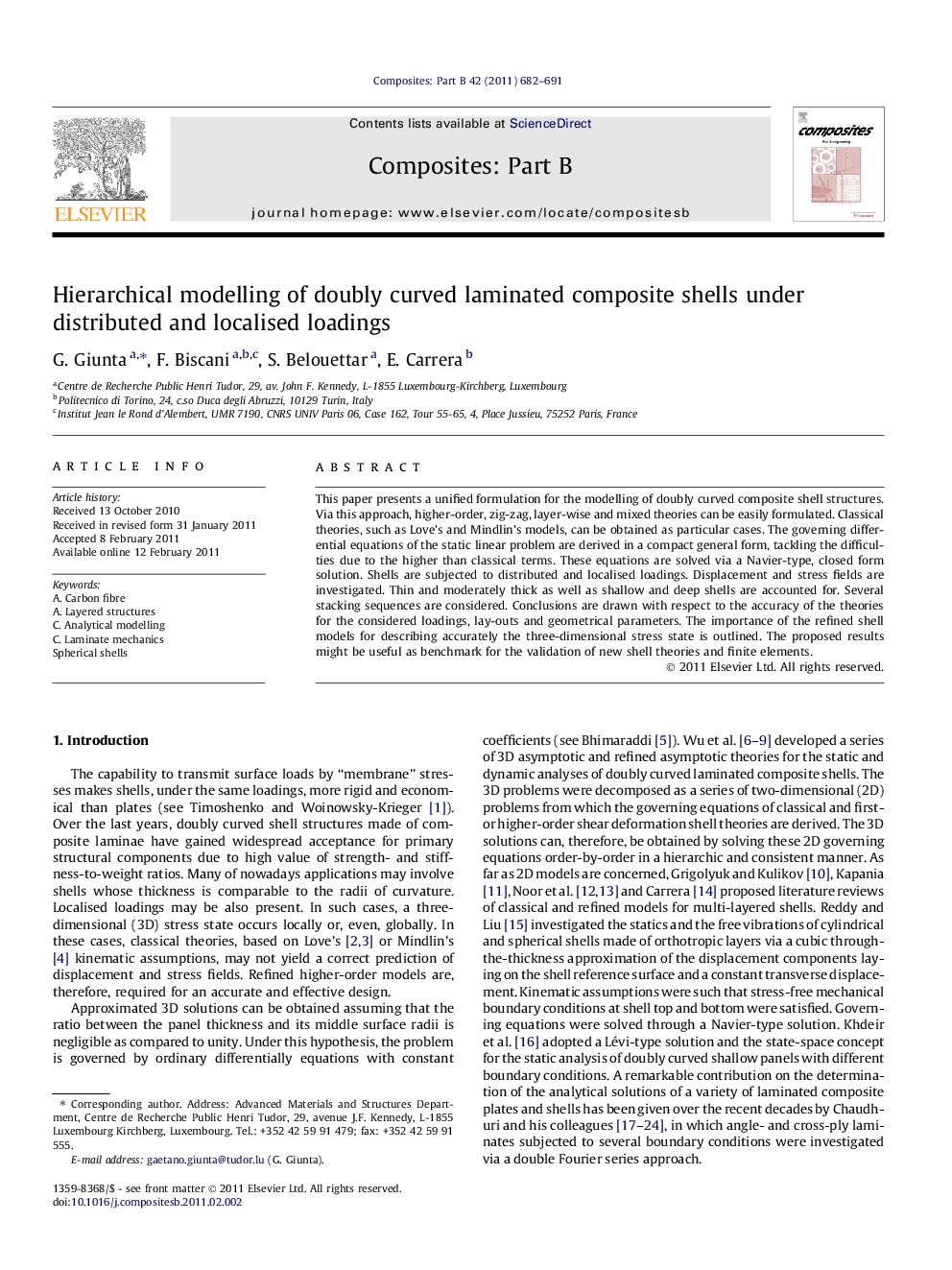| Article ID | Journal | Published Year | Pages | File Type |
|---|---|---|---|---|
| 818744 | Composites Part B: Engineering | 2011 | 10 Pages |
Abstract
This paper presents a unified formulation for the modelling of doubly curved composite shell structures. Via this approach, higher-order, zig-zag, layer-wise and mixed theories can be easily formulated. Classical theories, such as Love's and Mindlin's models, can be obtained as particular cases. The governing differential equations of the static linear problem are derived in a compact general form, tackling the difficulties due to the higher than classical terms. These equations are solved via a Navier-type, closed form solution. Shells are subjected to distributed and localised loadings. Displacement and stress fields are investigated. Thin and moderately thick as well as shallow and deep shells are accounted for. Several stacking sequences are considered. Conclusions are drawn with respect to the accuracy of the theories for the considered loadings, lay-outs and geometrical parameters. The importance of the refined shell models for describing accurately the three-dimensional stress state is outlined. The proposed results might be useful as benchmark for the validation of new shell theories and finite elements.
Keywords
Related Topics
Physical Sciences and Engineering
Engineering
Engineering (General)
Authors
G. Giunta, F. Biscani, S. Belouettar, E. Carrera,
